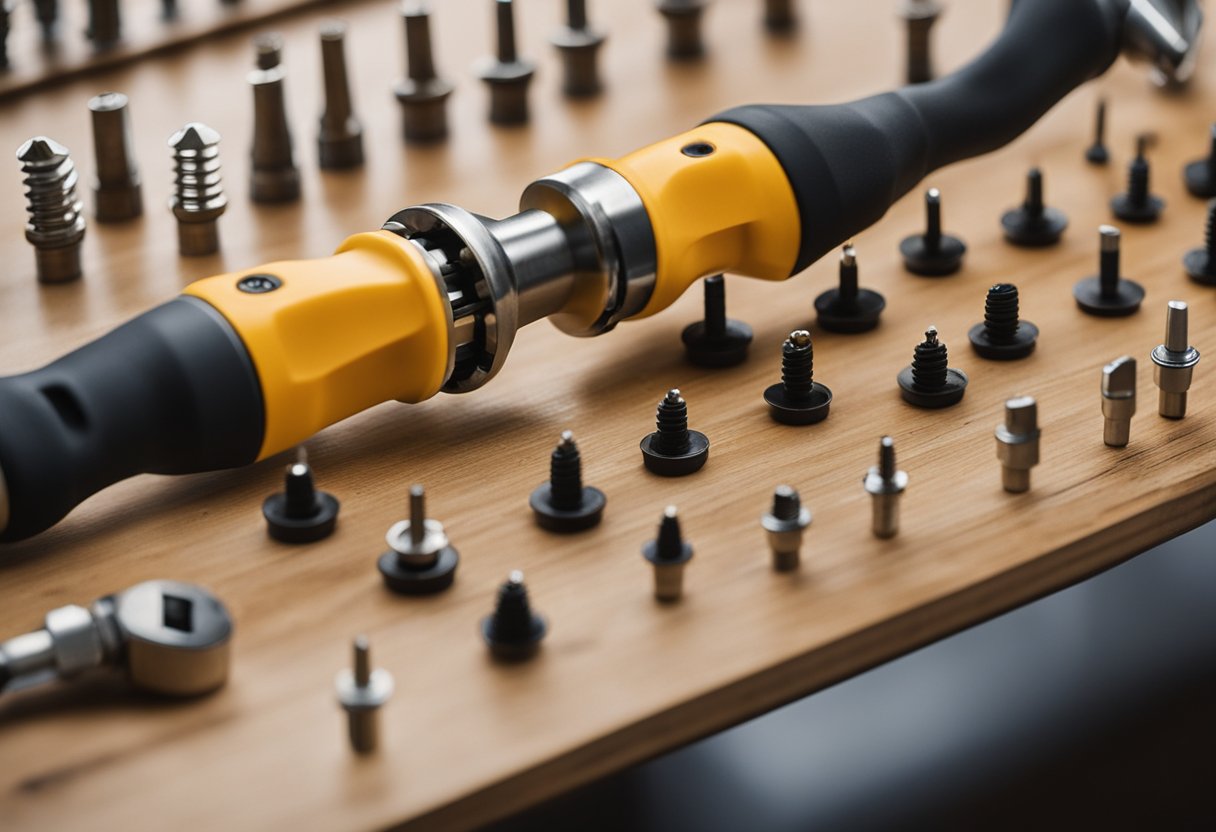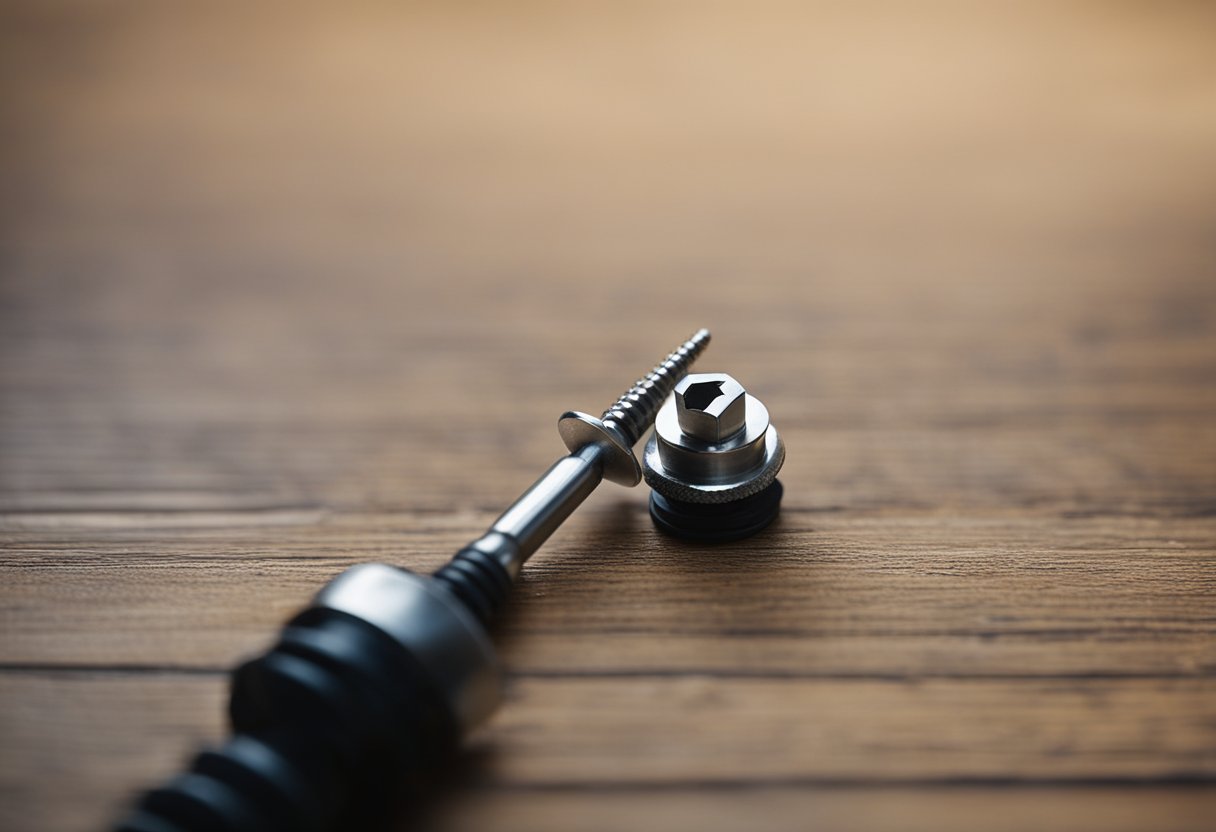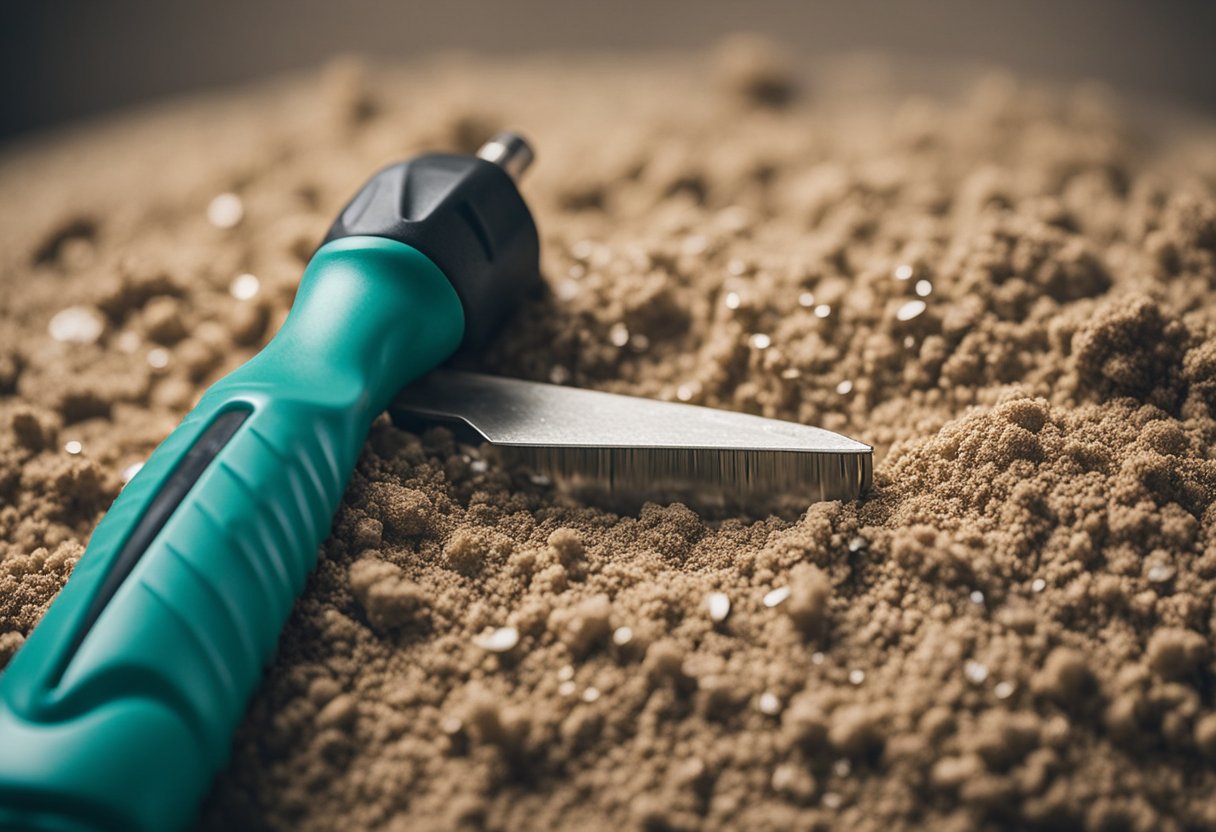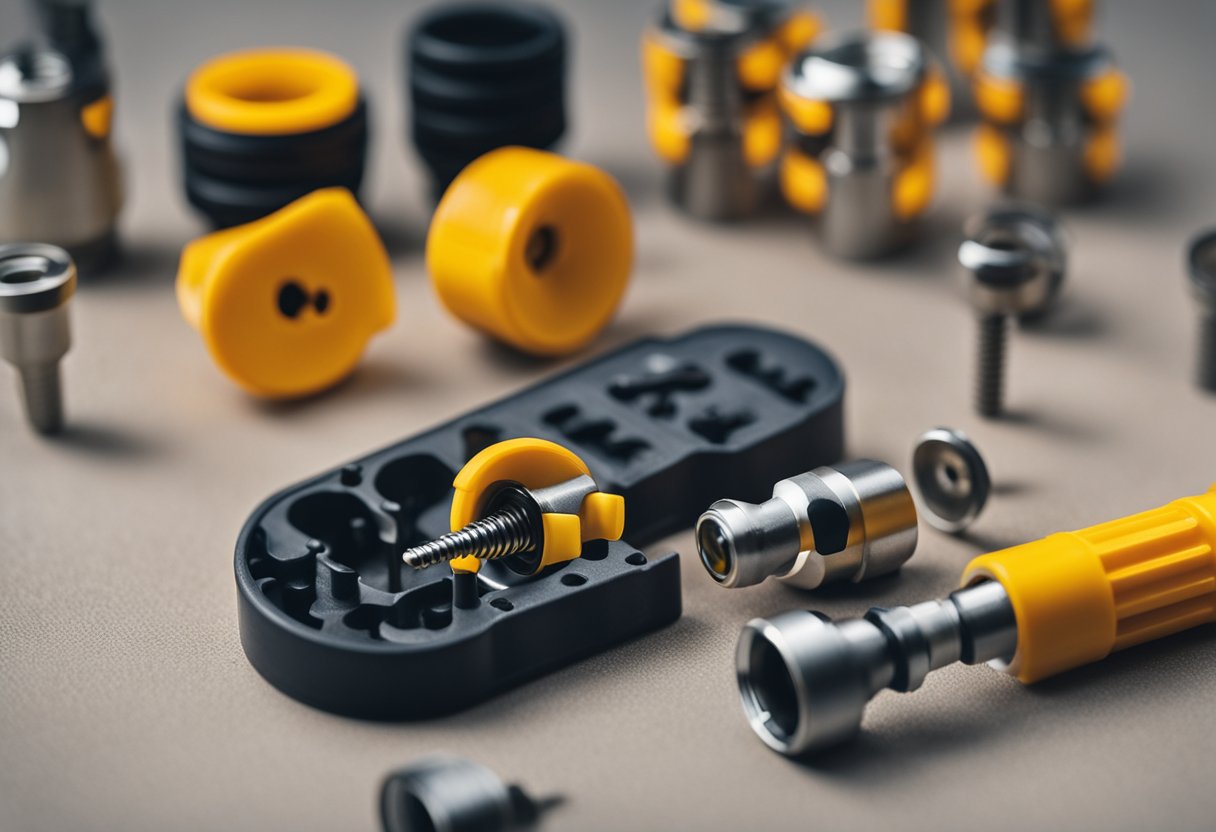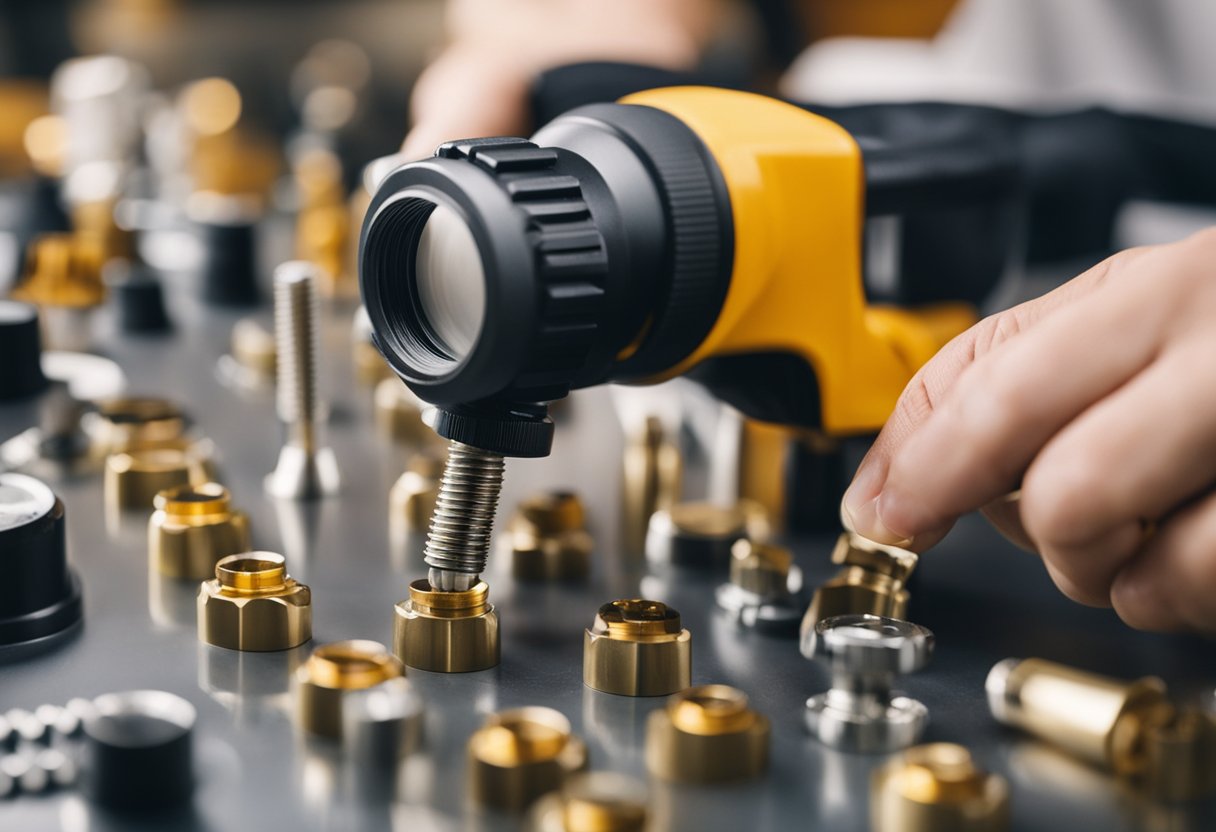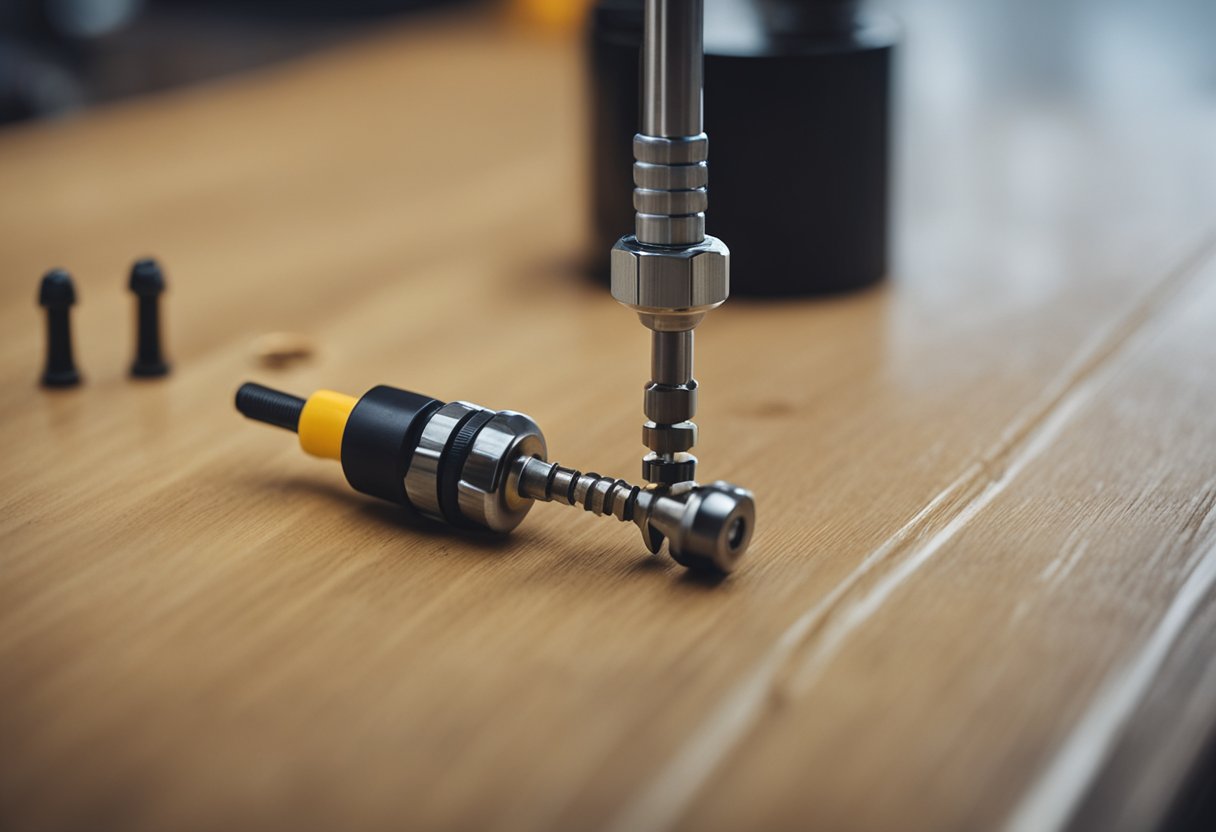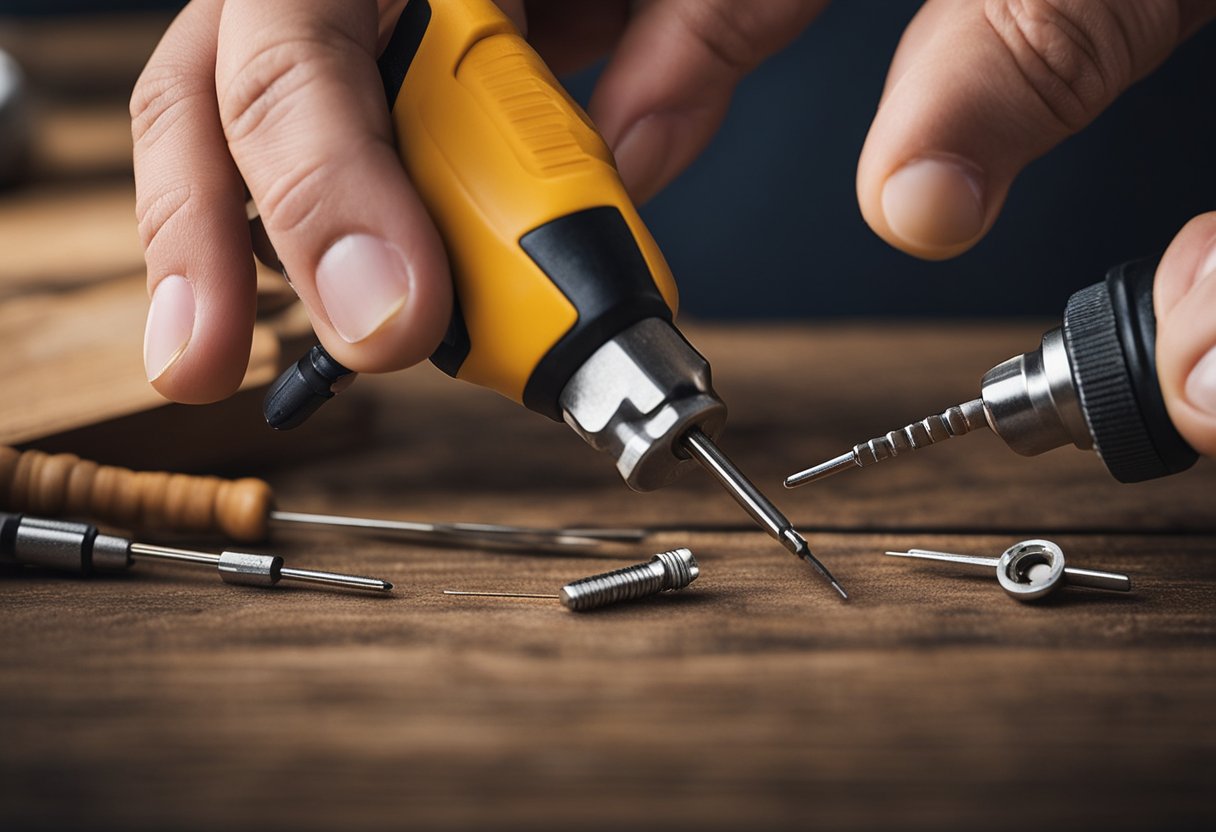Removing screw hole plugs can be a challenging task, but it is necessary when you need to access hidden screws or repair damaged furniture. Whether you are a DIY enthusiast or a professional woodworker, knowing how to remove screw hole plugs is an essential skill to have.
Understanding screw hole plugs is the first step to successfully removing them. Screw hole plugs are small wooden or plastic pieces that cover up screws or bolts in furniture, cabinets, or other wooden objects. They are designed to provide a smooth, finished look to the surface of the wood and can be difficult to remove without damaging the surrounding wood.
To remove screw hole plugs, you will need the right tools, preparation, and a step-by-step process. In this article, I will guide you through the process of removing screw hole plugs and provide you with tips and tricks to prevent damage to your furniture.
Key Takeaways
- Understanding screw hole plugs is essential to removing them successfully.
- Proper tools and preparation are necessary for removing screw hole plugs.
- Following a step-by-step process and taking safety measures can prevent damage and ensure a smooth removal process.
Understanding Screw Hole Plugs
As a woodworking enthusiast, I know how frustrating it can be to deal with screw hole plugs that refuse to budge. Screw hole plugs are used to hide screws and give a clean and polished look to the wood surface. However, sometimes you need to remove them to access the screws or replace them with new plugs. In this section, I will explain what screw hole plugs are, what they are made of, and how they work.
What are Screw Hole Plugs?
Screw hole plugs are small cylindrical pieces of wood, plastic, or metal that are used to cover up screw holes. They are inserted into the hole and glued in place to give a smooth and seamless look to the wood surface. They are commonly used in furniture making, cabinetry, and woodworking projects.
Types of Screw Hole Plugs
There are different types of screw hole plugs available in the market. The most common ones are wood plugs, which are made of the same type of wood as the surface they are inserted into. Other types of plugs include plastic plugs, metal plugs, and composite plugs.
How do Screw Hole Plugs Work?
Screw hole plugs work by covering up the screw hole and giving a smooth and polished look to the wood surface. They are inserted into the hole and glued in place. The excess material is then sanded down to give a flush finish. When you need to remove the screw hole plug, you can use a plug cutter or a drill bit to remove it without damaging the surrounding wood.
Conclusion
Understanding screw hole plugs is essential for any woodworking enthusiast. Knowing what they are, what they are made of, and how they work will help you in your woodworking projects. Whether you need to remove them or replace them, having this knowledge will make the process easier and more efficient.
Tools Required
Removing screw hole plugs can be a simple task if you have the right tools. Here are some of the tools you will need:
Screwdriver
A screwdriver is a must-have tool when removing screw hole plugs. It is used to unscrew the screws that hold the plug in place. Make sure you have a screwdriver that fits the screw head properly to avoid damaging the screw head.
Drill
A drill is another essential tool when removing screw hole plugs. It is used to drill a hole in the center of the plug, which makes it easier to remove. You can use a hand drill or a power drill depending on the size of the hole and the type of material you are working with.
Pliers
Pliers are used to grip and pull out the plug once it has been loosened. They come in different shapes and sizes, so choose the one that fits your plug and is comfortable to use.
Hole Saw
A hole saw is a circular saw blade used to cut holes in wood, plastic, and other materials. If you need to remove a large screw hole plug, a hole saw can be used to cut around the plug and remove it.
Chisel
A chisel is a sharp tool used to remove wood or other materials. If the screw hole plug is made of wood, you can use a chisel to remove it. Be careful when using a chisel to avoid damaging the surrounding material.
Clamp
A clamp is a tool used to hold the material in place while you work on it. It can be used to hold the material steady while you drill or cut around the screw hole plug. Make sure you choose a clamp that is strong enough to hold the material securely.
With these tools, you will be able to remove screw hole plugs with ease. Make sure you choose the right tool for the job and use it safely to avoid injury.
Preparation Before Removal
Before you start removing screw hole plugs, it is important to prepare yourself and your tools. Here are a few things you should keep in mind:
Choose the Right Tool
Choosing the right tool is essential for removing screw hole plugs. A screwdriver, drill, or pliers can all be used, depending on the type of plug and the material it is made of. For example, a screwdriver is ideal for removing wood plugs, while pliers are better suited for metal plugs.
Identify the Type of Plug
It is important to identify the type of plug before you start removing it. Wood plugs are usually made of the same material as the surrounding wood, while metal plugs are usually made of brass, steel, or aluminum. Knowing the type of plug will help you choose the right tool and method for removal.
Consider the Grain of the Wood
When removing wood plugs, it is important to consider the grain of the wood. You should always try to remove the plug in the same direction as the grain to avoid damaging the surrounding wood.
Protect the Trim
If you are removing screw hole plugs from furniture or trim, it is important to protect the surrounding area. You can use masking tape or a piece of cardboard to protect the trim from scratches or damage.
Take Your Time
Finally, it is important to take your time when removing screw hole plugs. Rushing the process can lead to damage to the surrounding area or the plug itself. Be patient and work carefully to ensure a successful removal.
Step by Step Process to Remove Screw Hole Plugs
https://www.youtube.com/watch?v=BeKOu7ng-HE&embed=true
Removing screw hole plugs can be a daunting task, but with the right tools and technique, it can be done easily without damaging the wood surface. Here is a step-by-step guide on how to remove screw hole plugs:
-
Assess the Type of Plug: Before starting to remove the screw hole plug, it’s important to identify the type of plug you are dealing with. There are typically two main types of screw hole plugs: wood plugs and plastic plugs. Wood plugs are commonly used in furniture, while plastic plugs are often used in drywall.
-
Prepare the Surface: To avoid any damage to the surrounding wood surface, it’s essential to prepare the area around the screw hole plug. Cover the surrounding area with masking tape to protect it from scratches or accidental damage.
-
Choose the Right Tool: Depending on the type of screw hole plug, you will need to choose the right tool to remove it. For wood plugs, a chisel or screwdriver can be used to pry the plug out. For plastic plugs, a drill with a pilot bit or hole saw can be used to drill out the plug.
-
Remove the Plug: Insert the chosen tool into the screw hole plug and gently pry or drill it out. Be careful not to apply too much pressure, as this can damage the surrounding wood surface. If the screw hole plug is glued in place, use a hairdryer to soften the glue before attempting to remove it.
-
Clean the Hole: Once the screw hole plug is removed, clean the hole and surrounding area with a soft cloth to remove any debris or dust. If necessary, use a wood filler to fill in the hole before sanding and refinishing the wood surface.
By following these simple steps, you can easily remove screw hole plugs without damaging the surrounding wood surface. With the right tools and technique, you can complete this task quickly and efficiently.
Preventing Damage During Removal
When removing screw hole plugs, it is important to take precautions to prevent damage to the surrounding wood, surface, or furniture. Here are some tips to help you remove screw hole plugs without damaging them:
Use Scrap Wood
One way to prevent damage to the surrounding area when removing screw hole plugs is to use scrap wood. Place a piece of scrap wood over the area surrounding the screw hole plug and clamp it down. This will help protect the surrounding area from damage while you remove the plug.
Apply Heat
Another way to remove screw hole plugs without damaging the surrounding area is to apply heat. Use a heat gun or a hair dryer to apply heat to the screw hole plug. The heat will soften the wood and make it easier to remove the plug without damaging the surrounding area.
Be Gentle
When removing screw hole plugs, it is important to be gentle. Use a screwdriver or a drill to slowly and gently remove the plug. Applying too much force can cause damage to the surrounding area.
Use the Right Tools
Using the right tools can also help prevent damage when removing screw hole plugs. Use a screwdriver or a drill that is the right size for the screw hole plug. Using the wrong size tool can cause damage to the surrounding area.
By following these tips, you can remove screw hole plugs without damaging the surrounding area. Remember to be gentle, use the right tools, and take precautions to prevent damage.
Finishing Touches Post Removal
Now that you have successfully removed the screw hole plugs, it’s time to focus on the finishing touches. The first step is to inspect the wood surface and ensure that it is smooth and free from any debris or rough patches.
If you notice any rough spots or unevenness, you may need to sand the surface lightly. Use a fine-grit sandpaper and sand in the direction of the grain of the wood to avoid damaging the surface. It’s important to note that excessive sanding can damage the wood, so be gentle and take your time.
Once you have finished sanding, wipe the surface with a clean cloth to remove any dust or debris. If you are planning to stain or paint the wood, it’s important to ensure that the surface is clean and free from any debris or dust particles.
If you are working with a natural wood finish, you may want to consider using a wood filler to fill in any gaps or holes left by the screws. This will help to create a smooth and even surface for the finishing coat.
In summary, removing screw hole plugs is just the first step in the process of restoring a wood surface. To achieve a professional-looking finish, it’s important to pay attention to the finishing touches. This includes sanding the surface, filling in any gaps or holes, and ensuring that the surface is clean and free from debris. With a little bit of patience and attention to detail, you can achieve a beautiful and flawless finish on any wood surface.
Additional Tips and Tricks
When it comes to removing screw hole plugs, there are a few additional tips and tricks that can help make the process easier and more effective.
1. Remove Wood Furniture Plugs Carefully
If you are removing screw hole plugs from wood furniture, it is important to be careful not to damage the surrounding wood. One way to do this is to use a small chisel or flathead screwdriver to gently pry up the plug. Once you have lifted it slightly, you can use pliers or a pair of needle-nose pliers to pull it out completely.
2. Use YouTube Tutorials for Guidance
If you are unsure about how to remove screw hole plugs, there are plenty of helpful YouTube tutorials available online. These videos can provide step-by-step guidance and help you avoid common mistakes.
3. Consider the Type of Wood
The type of wood you are working with can also affect how easy it is to remove screw hole plugs. For example, oak can be particularly difficult to work with because it is a hard, dense wood. If you are having trouble removing a plug from oak, you may need to use a drill or other power tool to carefully remove it.
4. Use Glue to Secure New Plugs
Once you have removed a screw hole plug, you may need to insert a new one to cover the hole. To ensure that the new plug stays in place, you can use a small amount of wood glue to secure it. Apply the glue to the inside of the hole, then insert the new plug and wipe away any excess glue.
5. Sand the Surface Smooth
Finally, once you have removed and replaced the screw hole plug, you may need to sand the surface smooth. This can help ensure that the plug is flush with the surrounding wood and that there are no rough edges or bumps. Use a fine-grit sandpaper and work slowly and carefully to avoid damaging the wood.
Safety Measures
As with any DIY project, safety should be the top priority when removing screw hole plugs. Here are a few safety measures to keep in mind:
Wear Protective Gear
Always wear protective gear when working with power tools. This includes safety glasses, gloves, and a dust mask. Sawdust and debris can fly around when using a saw or power drill, and you don’t want to risk getting anything in your eyes or lungs.
Use the Right Tools
Make sure you have the right tools for the job. Using the wrong tool can be dangerous and can damage the material you’re working with. For example, using a chisel to remove a screw hole plug can cause the wood to split or crack.
Secure the Material
Before you start removing the screw hole plug, make sure the material is secure. If you’re using a power drill, clamp the material down to prevent it from moving around. This will help ensure a clean and safe removal.
Be Mindful of the Surroundings
When using power tools, be mindful of your surroundings. Make sure there is enough space to move around and that no one is standing too close. If you’re working in a confined space, make sure there is proper ventilation.
Turn Off Power Tools When Not in Use
When you’re not using a power tool, turn it off and unplug it. This will prevent any accidents from happening if the tool is accidentally turned on.
By following these safety measures, you can ensure a safe and successful removal of screw hole plugs.
Frequently Asked Questions
What is the best tool for removing screw hole plugs?
The best tool for removing screw hole plugs depends on the type of material the plug is made of. For plastic wall plugs, a flathead screwdriver or a pair of pliers can be used to remove the plug. For metal wall plugs, a drill bit or screwdriver can be used to unscrew the plug. When using a drill bit, it’s important to use a left-hand drill bit that is the same size as the plug or slightly smaller.
How do you remove stuck wall plugs?
If a wall plug is stuck, try using pliers to grip the plug and twist it counterclockwise until it loosens. If the plug still won’t budge, try using a flathead screwdriver or drill bit to loosen it. If all else fails, try using a wall plug removal tool, which can be purchased at most hardware stores.
What is the easiest way to remove wall plugs without pliers?
If you don’t have pliers, you can use a flathead screwdriver or drill bit to remove wall plugs. Simply insert the screwdriver or drill bit into the center hole of the plug and turn it counterclockwise until the plug loosens and can be pulled out.
How do you remove wall plugs from plasterboard?
To remove wall plugs from plasterboard, use a flathead screwdriver or drill bit to loosen the plug. If the plug is stuck, try using pliers to grip and twist it counterclockwise until it loosens. If the plug still won’t budge, try using a wall plug removal tool, which can be purchased at most hardware stores.
What are some tips for removing wood plugs from furniture?
To remove wood plugs from furniture, use a drill bit that is the same size as the plug to drill a hole in the center of the plug. Then, use a screwdriver or pliers to grip and twist the plug counterclockwise until it loosens and can be pulled out.
How do you remove a wall plug with a broken screw?
If a screw is broken off inside a wall plug, use a drill bit that is slightly smaller than the screw to drill a hole in the center of the screw. Then, use a screw extractor tool to remove the broken screw. If the screw extractor tool doesn’t work, try using pliers or a flathead screwdriver to remove the plug.

Hi, I’m Sal Muller of Tooltrip.com. My DIY experience led me to understand essential power tools for home projects. Tooltrip.com guides enthusiasts and professionals in choosing right tools for any job. I provide concise top tool reviews for easier, efficient DIY.

